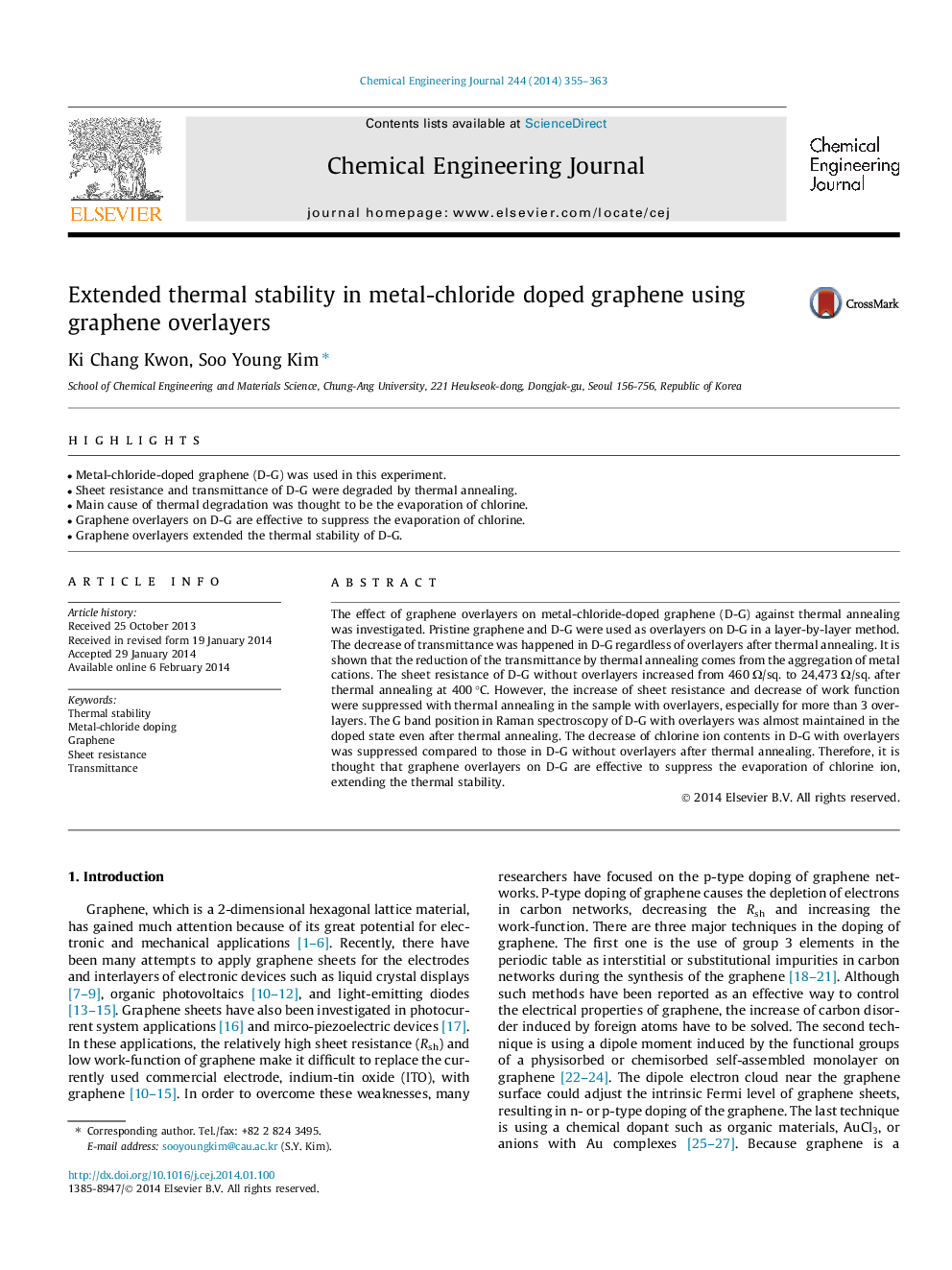| Article ID | Journal | Published Year | Pages | File Type |
|---|---|---|---|---|
| 147804 | Chemical Engineering Journal | 2014 | 9 Pages |
•Metal-chloride-doped graphene (D-G) was used in this experiment.•Sheet resistance and transmittance of D-G were degraded by thermal annealing.•Main cause of thermal degradation was thought to be the evaporation of chlorine.•Graphene overlayers on D-G are effective to suppress the evaporation of chlorine.•Graphene overlayers extended the thermal stability of D-G.
The effect of graphene overlayers on metal-chloride-doped graphene (D-G) against thermal annealing was investigated. Pristine graphene and D-G were used as overlayers on D-G in a layer-by-layer method. The decrease of transmittance was happened in D-G regardless of overlayers after thermal annealing. It is shown that the reduction of the transmittance by thermal annealing comes from the aggregation of metal cations. The sheet resistance of D-G without overlayers increased from 460 Ω/sq. to 24,473 Ω/sq. after thermal annealing at 400 °C. However, the increase of sheet resistance and decrease of work function were suppressed with thermal annealing in the sample with overlayers, especially for more than 3 overlayers. The G band position in Raman spectroscopy of D-G with overlayers was almost maintained in the doped state even after thermal annealing. The decrease of chlorine ion contents in D-G with overlayers was suppressed compared to those in D-G without overlayers after thermal annealing. Therefore, it is thought that graphene overlayers on D-G are effective to suppress the evaporation of chlorine ion, extending the thermal stability.
